Yu-Tong Yang, Zhong-Yuan Qiu, Zhen Zheng, Liang-Xi Pu, Ding-Ding Chen, Jiang Zheng, Rui-Jie Zhang, Bo Zhang & Shi-Yao Huang
Abstract
High-pressure die casting (HPDC) is one of the most popular mass production processes in the automotive industry owing to its capability for part consolidation. However, the nonuniform distribution of mechanical properties in large-sized HPDC products adds complexity to part property evaluation. Therefore, a methodology for property prediction must be developed. Material characterization, simulation technologies, and artificial intelligence (AI) algorithms were employed. Firstly, an image recognition technique was employed to construct a temperature-microstructure characteristic model for a typical HPDC Al7Si0.2Mg alloy. Moreover, a porosity/microstructure-mechanical property model was established using a machine learning method based on the finite element method and representative volume element model results. Additionally, the computational results of the casting simulation software were mapped with the porosity/microstructure-mechanical property model, allowing accurate prediction of the property distribution of the HPDC Al-Si alloy. The AI-enabled property distribution model developed in this study is expected to serve as a foundation for intelligent HPDC part design platforms in the automotive industry.
Keywords
- Artificial intelligence (AI)
- Properties prediction
- High-pressure die-casting (HPDC)
- Image recognition
- Machine learning
DOI
https://doi.org/10.1007/s40436-024-00485-1
- Fig. 1
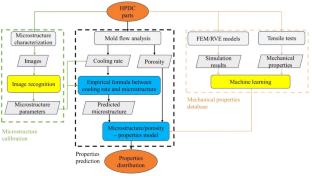 View in article
View in article - Fig. 2
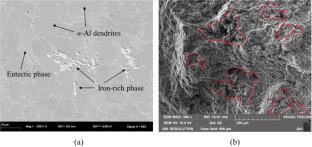 View in article
View in article - Fig. 3
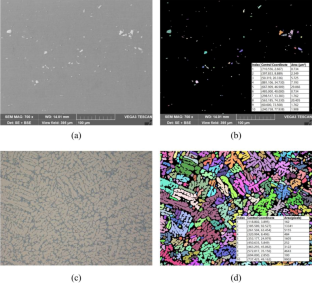 View in article
View in article - Fig. 4
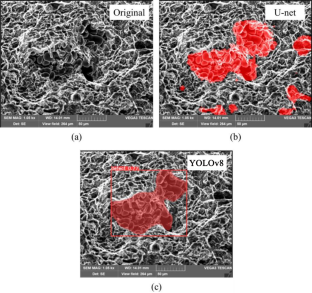 View in article
View in article - Fig. 5
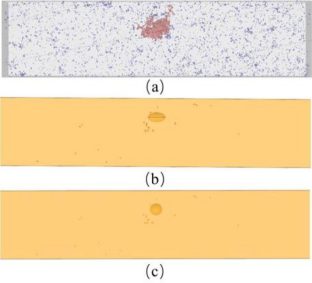 View in article
View in article - Fig. 6
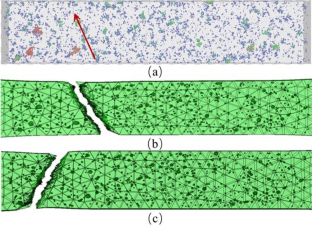 View in article
View in article - Fig. 7
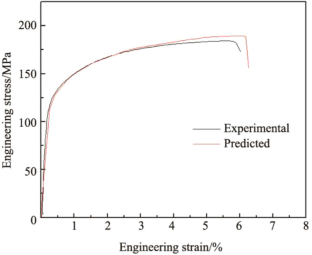 View in article
View in article - Fig. 8
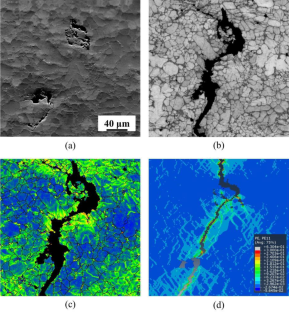 View in article
View in article - Fig. 9
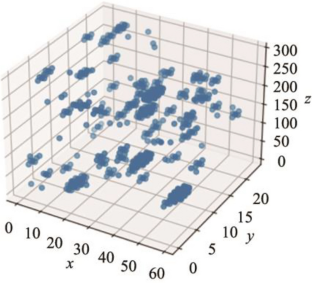 View in article
View in article - Fig. 10
 View in article
View in article - Fig. 11
 View in article
View in article
References
- Ubertalli G, D’Aiuto F, Plano S et al (2016) High strain rate behavior of aluminum die cast components. Procedia Struct Integr 2:3617–3624Article Google Scholar
- Zhang Y, Tan W, Zheng J et al (2023) Quantitative analysis of 3D pore characteristics effect on the ductility of HPDC Al-10Si-0.3 Mg alloy through X-Ray tomography. J Mater Res Technol 26:8079–8096Article CAS Google Scholar
- Dou K, Lordan E, Zhang Y et al (2021) A novel approach to optimize mechanical properties for aluminium alloy in high pressure die casting (HPDC) process combining experiment and modelling. J Mater Process Technol 296:117193. https://doi.org/10.1016/j.jmatprotec.2021.117193Article CAS Google Scholar
- Liu R, Zheng J, Godlewski L et al (2020) Influence of pore characteristics and eutectic particles on the tensile properties of Al-Si-Mn-Mg high pressure die casting alloy. Mater Sci Eng A 783:139280. https://doi.org/10.1016/j.msea.2020.139280Article CAS Google Scholar
- Zhang Y, Lordan E, Dou K et al (2020) Influence of porosity characteristics on the variability in mechanical properties of high pressure die casting (HPDC) AlSi7MgMn alloys. J Manuf Process 56:500–509Article Google Scholar
- Yan P, Mao W, Fan J et al (2020) Microstructural evolution, segregation and fracture behavior of A390 alloy prepared by combined Rheo-HPDC processing and Sr-modifier. J Alloys Compd 835:155297. https://doi.org/10.1016/j.jallcom.2020.155297Article CAS Google Scholar
- Lin B, Fan T, Yu LH et al (2021) Microstructure and high temperature tensile properties of Al-Si-Cu-Mn-Fe alloys prepared by semi-solid thixoforming. Trans Nonferrous Met Soc China 31:2232–2249Article Google Scholar
- Taylor JA (2012) Iron-containing intermetallic phases in Al-Si based casting alloys. Procedia Mater Sci 1:19–33Article CAS Google Scholar
- Faragallah OS, El-Hoseny HM, El-sayed HS (2023) Efficient brain tumor segmentation using OTSU and K-means clustering in homomorphic transform. Biomed Signal Process Control 84:104712. https://doi.org/10.1016/j.bspc.2023.104712Article Google Scholar
- Pandey B (2023) Separating the blue cloud and the red sequence using Otsu’s method for image segmentation. Astron Comput 44:100725. https://doi.org/10.1016/j.ascom.2023.100725Article ADS Google Scholar
- Jiang Y, Hu K, Zhang X et al (2023) A saturation channel detection method for surface defects of silicon nitride bearing rollers based on adaptive gamma correction-edge threshold segmentation coupling algorithm. Mater Today Commun 36:106397. https://doi.org/10.1016/j.mtcomm.2023.106397Article CAS Google Scholar
- Dong YB, Li MJ, Sun Y (2014) Research on threshold segmentation algorithms. Adv Mater Res 860/863:2888–2891Google Scholar
- Wescoat E, Krugh M, Henderson A et al (2019) Vibration analysis utilizing unsupervised learning. Procedia Manuf 34:876–884Article Google Scholar
- Chen LC, Zhu Y, Papandreou G et al (2018) Encoder-decoder with atrous separable convolution for semantic image segmentation. In: Proceedings of the European conference on computer vision (ECCV), Springer, Munich. pp 801–818
- Rajamani KT, Rani P, Siebert H et al (2023) Attention-augmented U-net (AA-U-net) for semantic segmentation. Signal Image Video Process 17:981–989Article PubMed Google Scholar
- Feng C, Zhong Y, Gao Y et al (2021) Tood: task-aligned one-stage object detection. In: 2021 IEEE/CVF international conference on computer vision (ICCV), Montreal, Canada, 10–17 October
- Bolya D, Zhou C, Xiao F et al (2019) Yolact: real-time instance segmentation. In: Proceedings of the IEEE/CVF international conference on computer vision (ICCV) Seoul, Korea, 27 October–2 November. pp 9157–9166
- Weiler JP, Wood JT (2009) Modeling fracture properties in a die-cast AM60B magnesium alloy II—the effects of the size and location of porosity determined using finite element simulations. Mater Sci Eng A 527(1/2):32–37Article Google Scholar
- Vanderesse N, Maire É, Chabod A et al (2011) Microtomographic study and finite element analysis of the porosity harmfulness in a cast aluminium alloy. Int J Fatigue 33(12):1514–1525Article CAS Google Scholar
- Chen H, Yang Y, Cao S et al (2021) Fatigue life prediction of aluminum alloy 6061 based on defects analysis. Int J Fatigue 147:106189. https://doi.org/10.1016/j.ijfatigue.2021.106189Article CAS Google Scholar
- Zhang Y, Shen F, Zheng J et al (2022) Ductility prediction of HPDC aluminum alloy using a probabilistic ductile fracture model. Theor Appl Fract Mech 119:103381. https://doi.org/10.1016/j.tafmec.2022.103381Article CAS Google Scholar
- Zhang W, Jing H, Xu L et al (2015) Numerical investigation of creep crack initiation in P92 steel pipes with embedded spherical defects under internal pressure at 650 °C. Eng Fract Mech 139:40–55Article Google Scholar
- Poroshin V, Shlishevsky A (2019) The forecasting of deformational and strength properties of metals with uniformly scattered defects in form of spherical hollows at single and cyclic loading. Mater Today Proc 11:58–65Article Google Scholar
- Chan LC, Lu XZ, Yu KM (2015) Multiscale approach with RSM for stress-strain behaviour prediction of micro-void-considered metal alloy. Mater Des 83:129–137Article CAS Google Scholar
- Dong X, Yang H, Zhu X et al (2019) High strength and ductility aluminium alloy processed by high pressure die casting. J Alloys Compd 773:86–96Article CAS Google Scholar
- Sadayappan K, Birsan G, Caron F et al (2017) High pressure die casting aluminum alloys for automotive structural applications. Die Cast Eng 6(61):8–18Google Scholar
- Bargmann S, Klusemann B, Markmann J et al (2018) Generation of 3D representative volume elements for heterogeneous materials: a review. Prog Mater Sci 96:322–384Article Google Scholar
- Matouš K, Geers MGD, Kouznetsova VG et al (2017) A review of predictive nonlinear theories for multiscale modeling of heterogeneous materials. J Comput Phys 330:192–220Article ADS MathSciNet Google Scholar
- Chen B, Peng X, Fan J et al (2005) A constitutive description for casting aluminum alloy A104 based on the analysis of cylindrical and spherical void models. Int J Plast 21:2232–2253Article CAS Google Scholar
- Zhang Y, Li J, Shen F et al (2022) Microstructure-property relationships in HPDC Aural-2 alloy: experimental and CP modeling approaches. Mater Sci Eng A 848:143364. https://doi.org/10.1016/j.msea.2022.143364Article CAS Google Scholar
- Mohr D, Treitler R (2008) Onset of fracture in high pressure die casting aluminum alloys. Eng Fract Mech 75:97–116Article Google Scholar
- Wang Y, Dantcheva A (2020) A video is worth more than 1000 lies. Comparing 3DCNN approaches for detecting deepfakes. In: 15th IEEE international conference on automatic face and gesture recognition (FG 2020), Buenos Aires, Argentina, 16–20 November. pp 515–519
- Chua LO, Roska T (1993) The CNN paradigm. IEEE Trans Circuits Syst I Fundam Theory Appl 40(3):147–156Article Google Scholar
- Akiba T, Sano S, Yanase T et al (2019) Optuna: a next-generation hyperparameter optimization framework. In: Proceedings of the 25th ACM SIGKDD international conference on knowledge discovery & data mining (KDD '19). Association for Computing Machinery, New York. pp 2623–2631